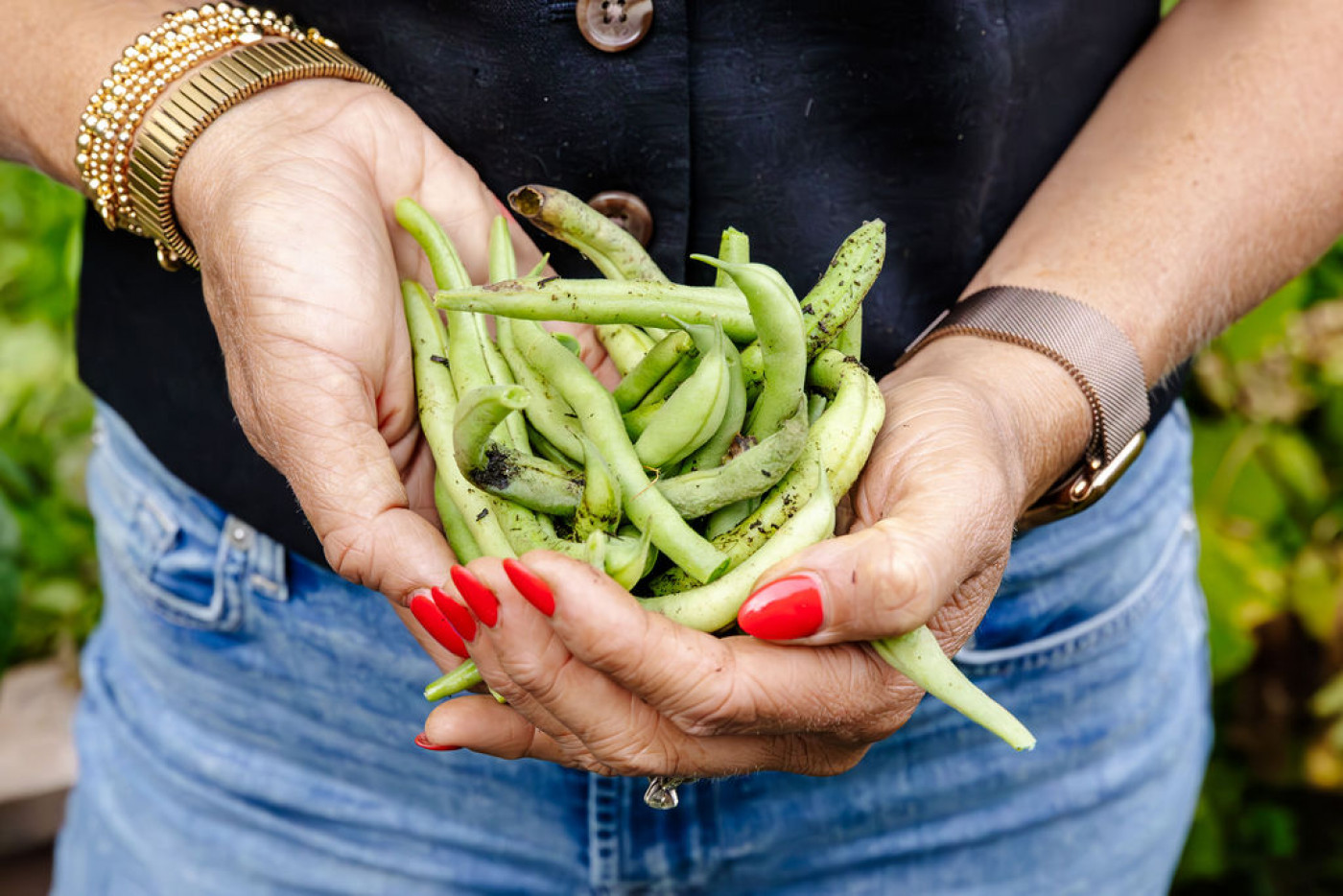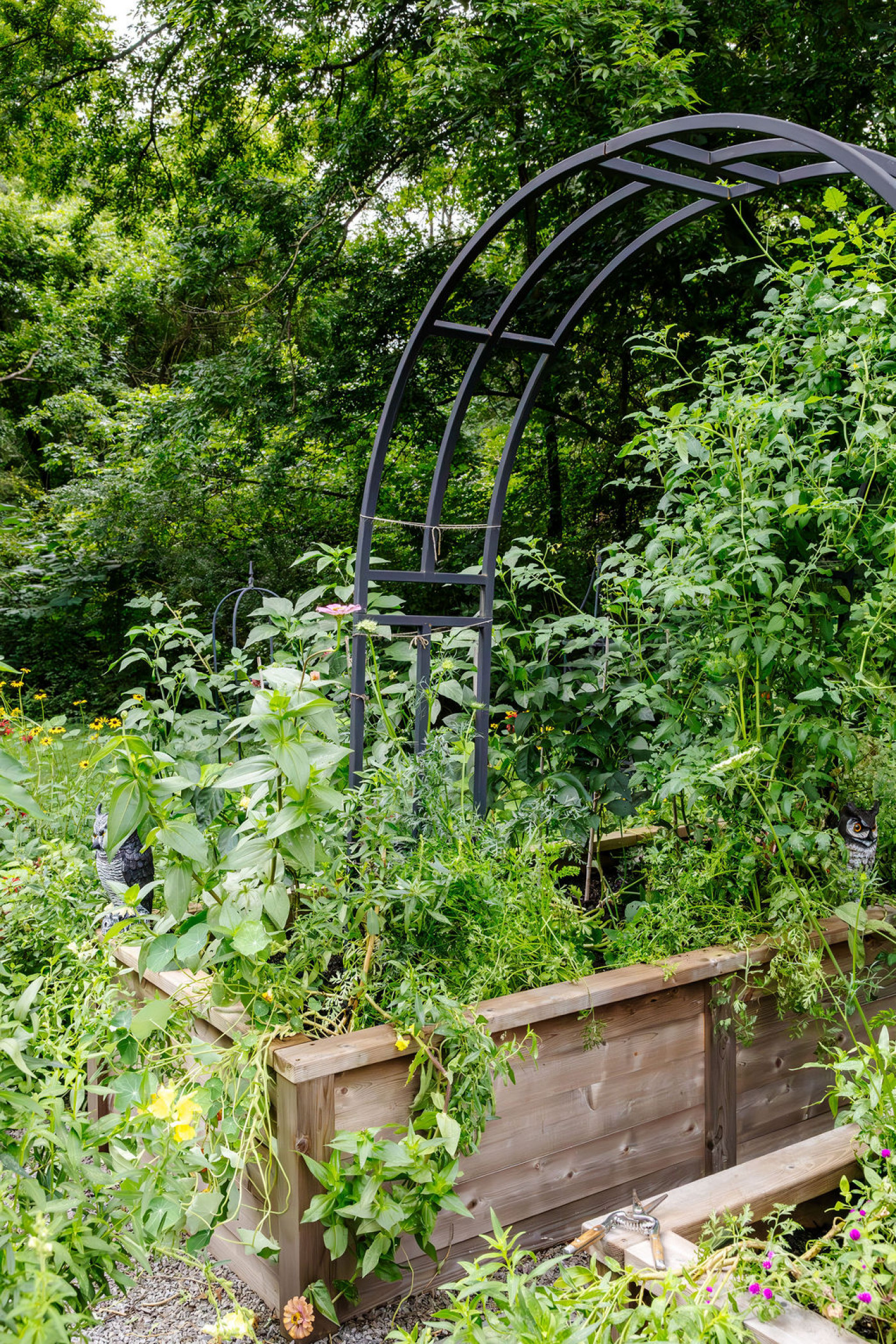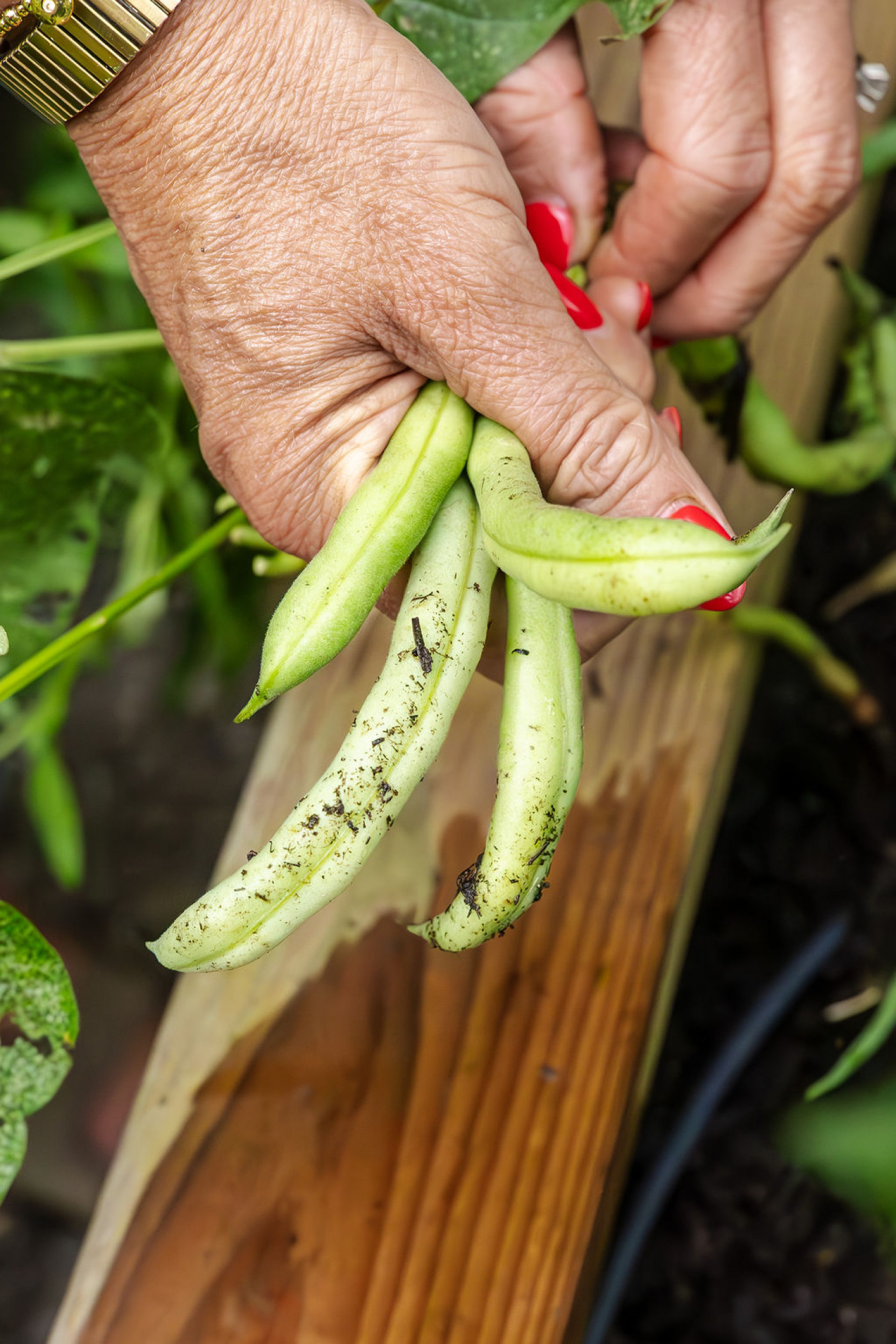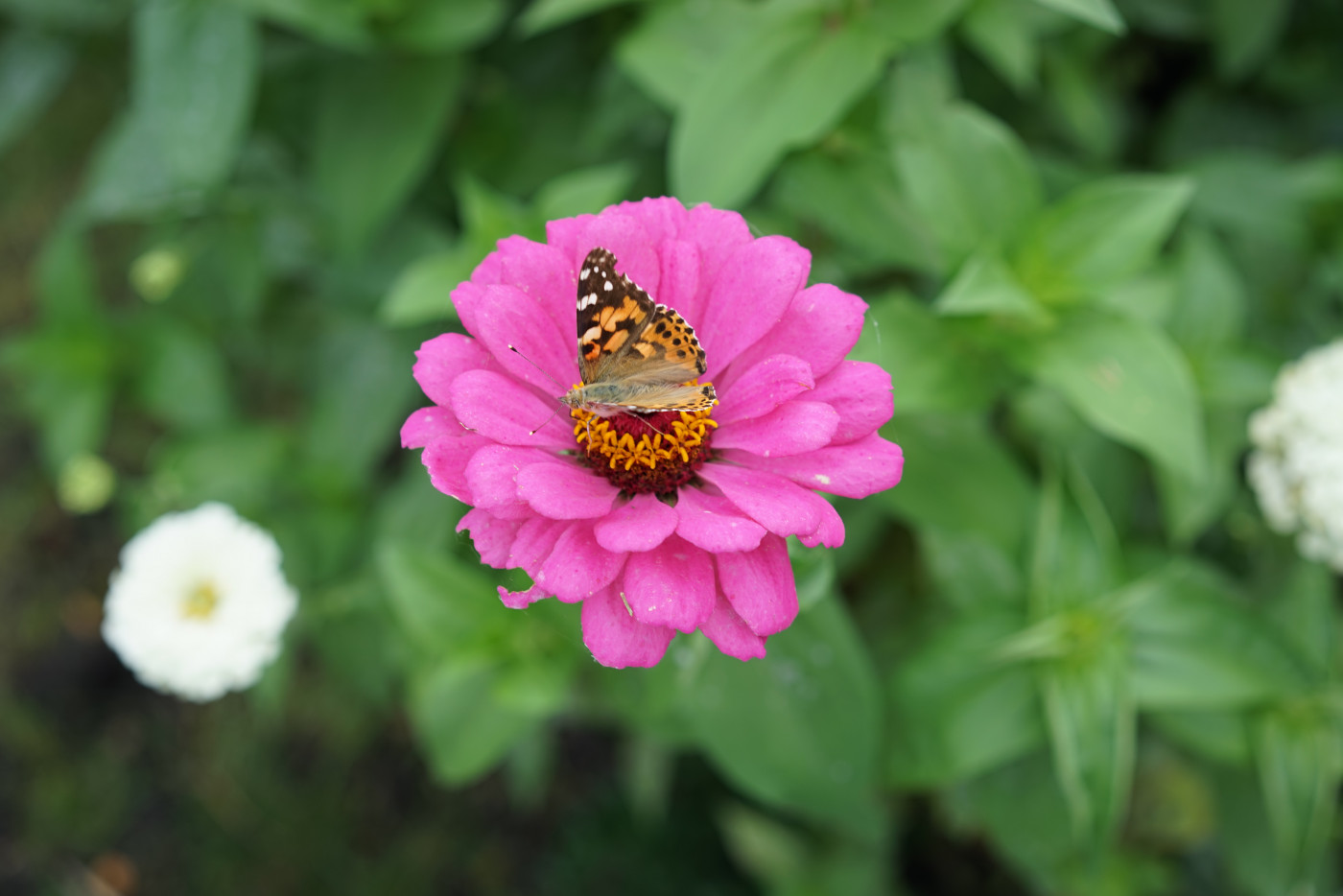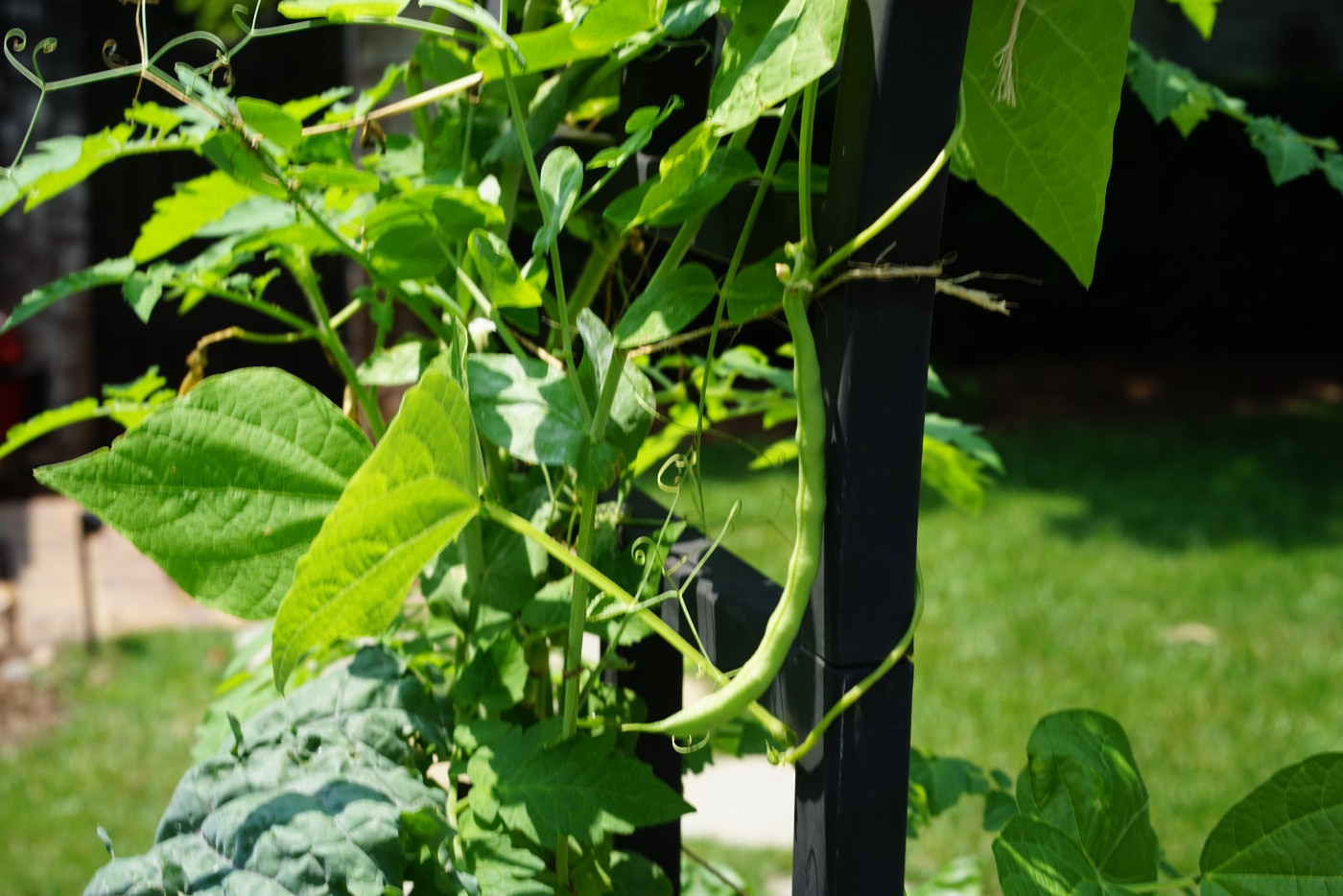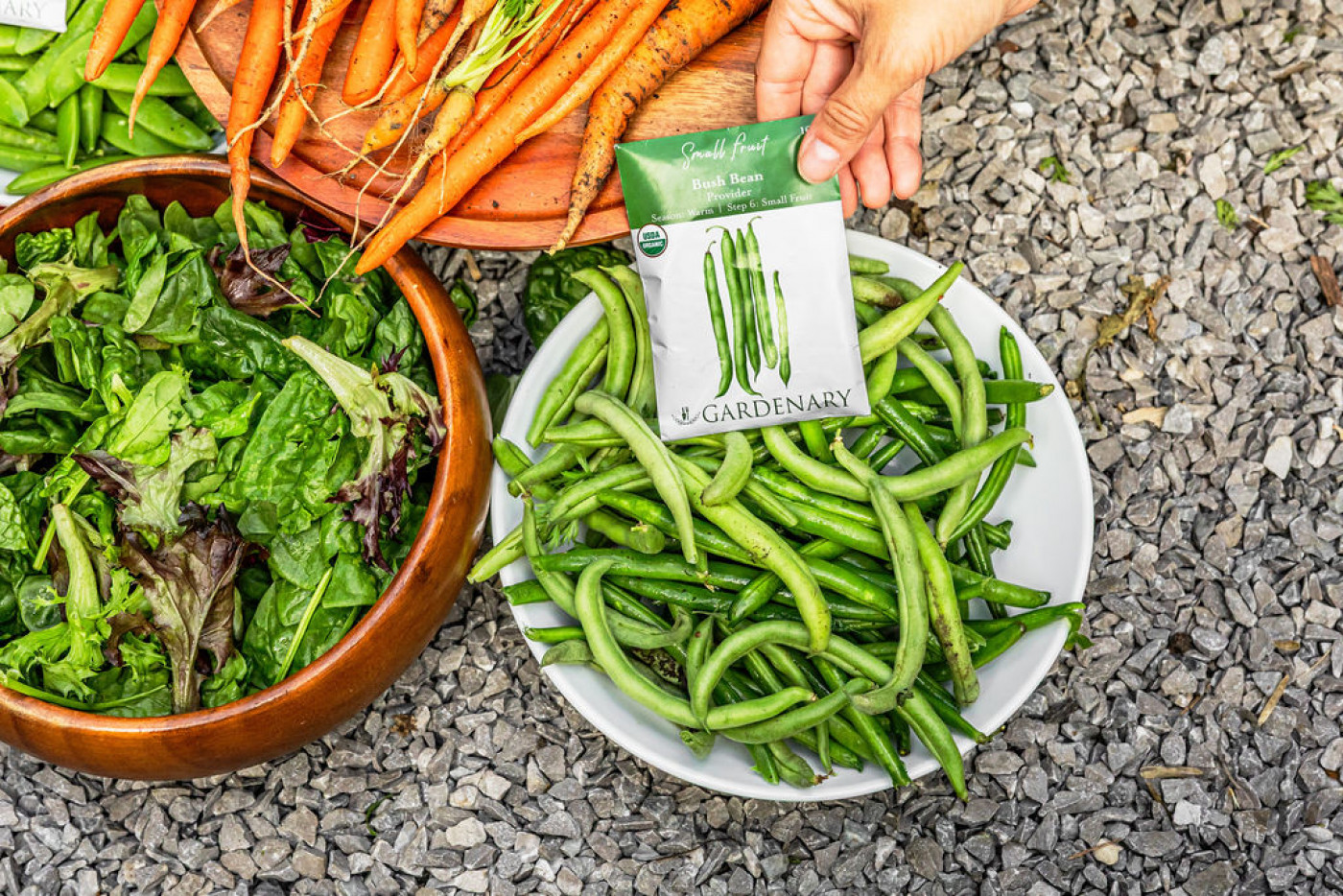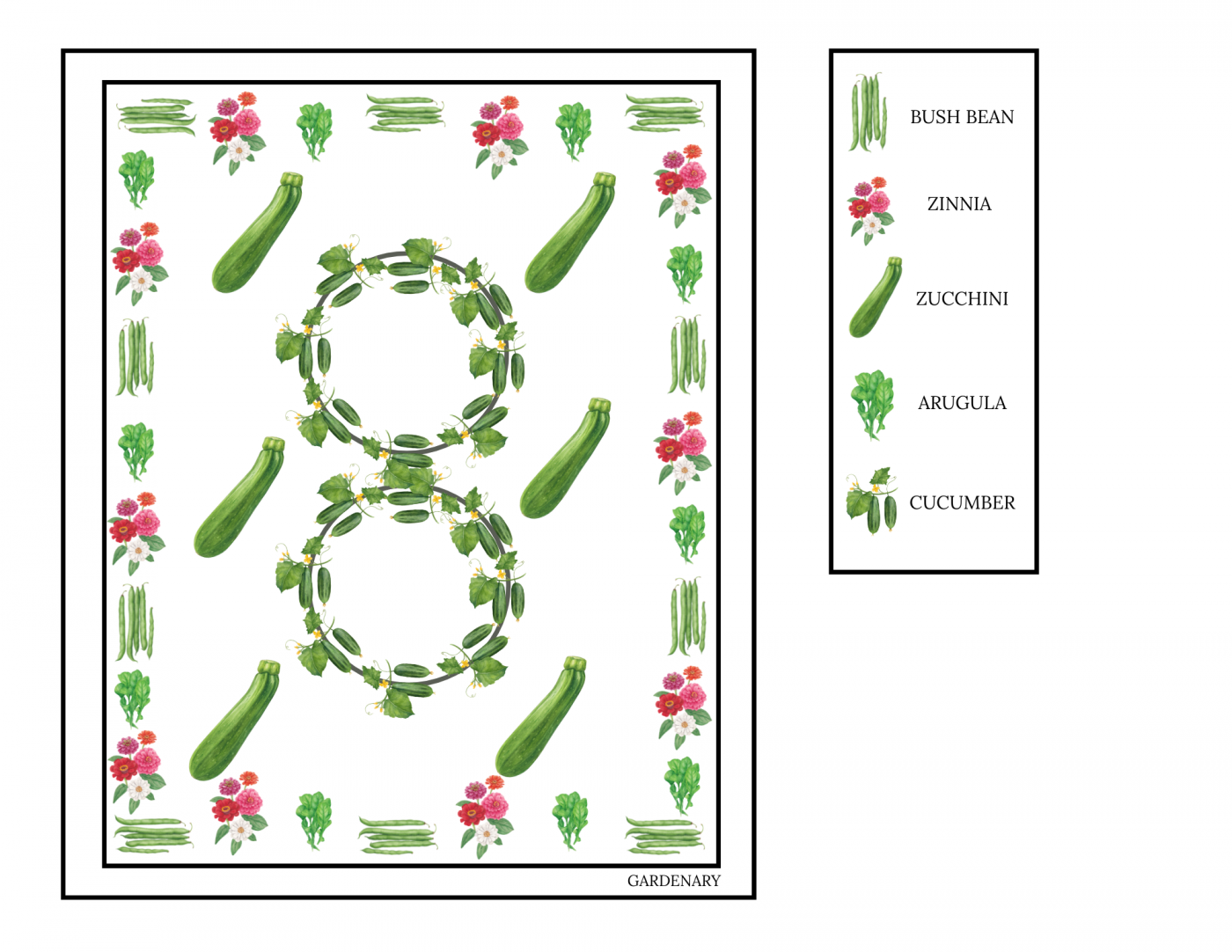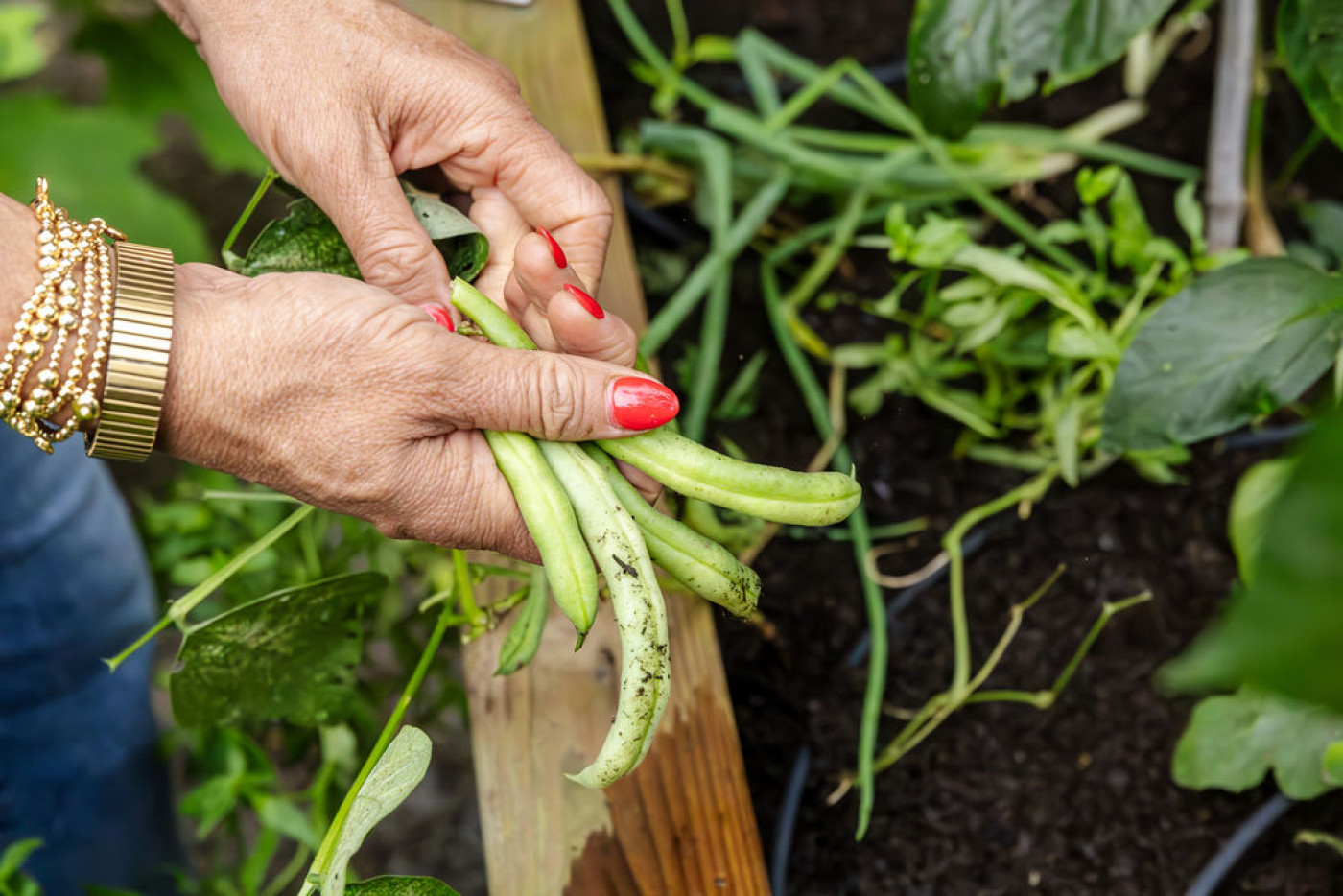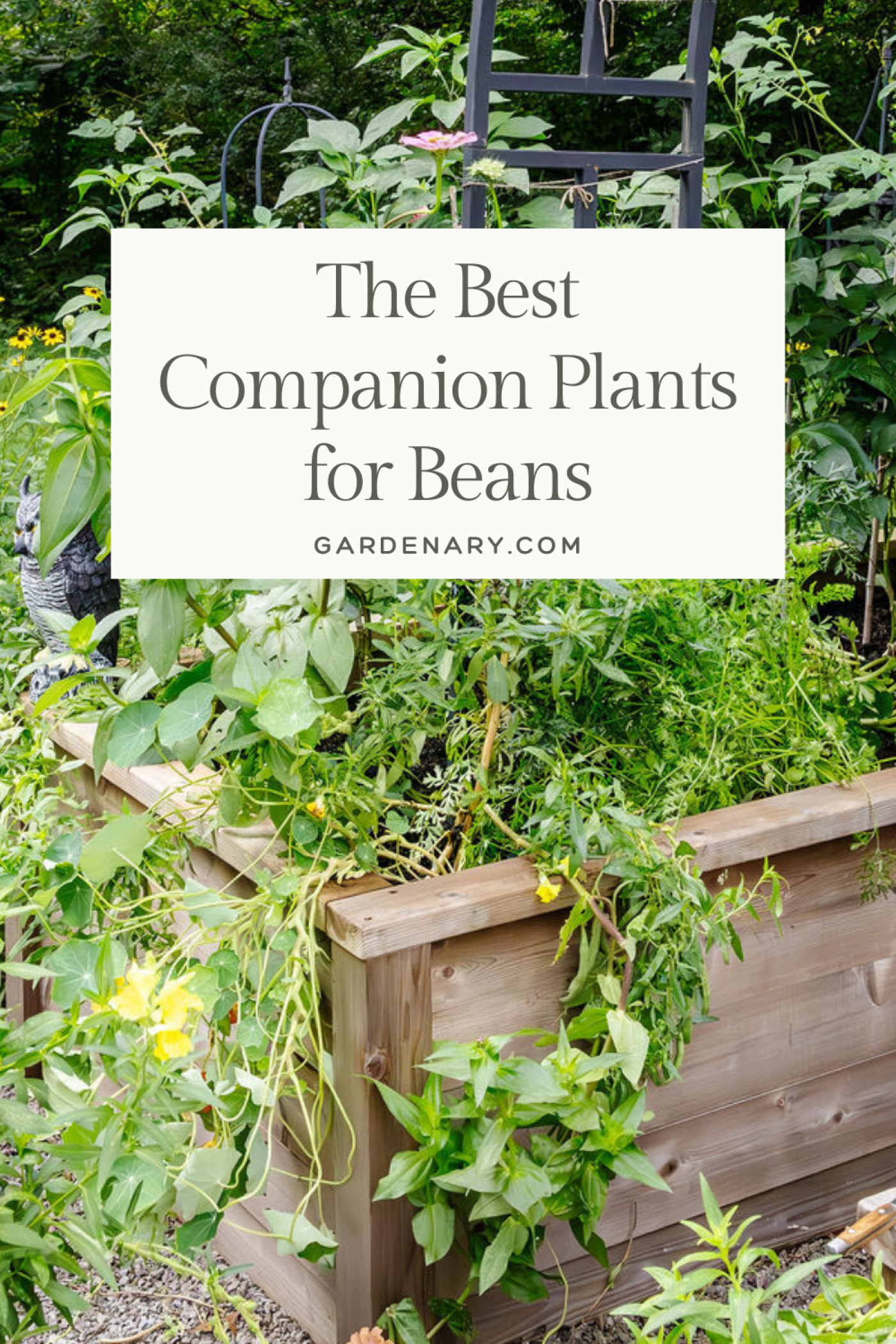Beans are generous plants, offering not only a delicious harvest but also healthier soil for the crops around them. Pole beans and bush beans have different growth habits, but both enrich the garden by fixing nitrogen into the soil—a process that helps other plants grow strong without extra fertilizer. This makes beans some of the friendliest crops you can grow.
Pole beans climb high, often reaching six feet or more, and need vertical support such as trellises or corn stalks to keep them upright. They take longer to produce than bush beans, but once they start, they keep on going with a steady stream of pods until summer heat slows them down or frost ends the season. Bush beans are compact and self-supporting. They produce one big flush of beans all at once, followed by only a small trickle. While they yield less than pole beans, they are beloved for their ease of harvest and quick turnover in the garden.
Whichever type you grow, companion planting beans alongside the right neighbors can improve pollination, reduce pests, and maximize your garden’s productivity. But beans also have a few bad matches you’ll want to avoid.
At a Glance
- Best Companion Plants for Beans – Corn, cucumbers, carrots, potatoes, radishes, spinach, squash, tomatoes, marigolds, nasturtium, oregano, dill, and summer savory attract pollinators, deter pests, and improve soil health.
- Worst Plants to Grow with Beans – Avoid onions, garlic, leeks, chives, beets (with pole beans), and cucumbers (with pole beans) as they stunt growth or disrupt nitrogen-fixing.
- Benefits of Companion Planting Beans – Natural pest control, stronger plant growth, healthier soil through nitrogen-fixing, and maximized space with supportive companion crops.
Companion Planting Beans: Why it Works
Companion planting is the art of pairing plants that help one another thrive. Some plants enrich the soil, others ward off pests, and many attract pollinators that boost harvests. When you set plants up with the right companions, you create a healthier and more productive garden.
Beans are already generous companions thanks to their nitrogen-fixing roots, but they still benefit from plants that support them in return. The best bean companion plants are those that deter the pests that love to chew on beans or those that invite pollinators and beneficial insects to the garden. Since beans love warm weather, lots of sun, and steady water, their ideal partners share those same growing conditions.
This is why beans have been central to the Three Sisters planting method, a traditional Native American companion planting system that combines corn, beans, and squash. Each plant contributes something essential: corn provides a trellis for pole beans, beans fix nitrogen into the soil, and squash shades the ground to suppress weeds.


Start Your Garden the Easy Way
Get growing with 10 foolproof seed varieties, a 120-page gardening guide, planting plans, and step-by-step video lessons—all designed to help you succeed. The Easy Garden Kit makes it simple, fun, and affordable to bring fresh food and flowers to your backyard.
How Beans Likes to Grow
Bush beans are some of the easiest vegetables to tuck into raised beds. I like to plant them along the edges, where their foliage and pods can spill over gracefully without shading taller crops in the middle. Pole beans, on the other hand, need the support of a trellis, teepee, or tall companion like corn to climb as they grow. If you don’t have raised beds, both beans will also grow happily in containers that are at least 18 inches across and 12 inches deep. Just be sure to enrich the potting soil with compost.
Both bush and pole beans thrive in full sun, needing at least six to eight hours of direct light each day. They prefer temperatures between 65°F and 85°F, and since they are not frost tolerant, it’s best to wait until all danger of frost has passed before planting. In cooler climates, beans shine during summer. In warmer regions, they may do best in late spring and again in the fall.
The Best Companion Plants for Beans
Beans are friendly neighbors to most vegetables, herbs, and flowers, but they do especially well with plants that help with pollination, pest control, soil health, and space-saving.
The Best Bean Companions to Increase Pollination
Pole and bush bean companion plants that attract pollinators are essential for strong harvests. Catnip is a surprising helper, repelling pests while inviting bees and butterflies. Flowers like borage, marigolds, nasturtium, petunia, and zinnia all lure pollinators and confuse pests such as the Mexican bean beetle. Even strawberries can work well as bean companions when given enough room, since they attract pollinators and enjoy similar growing conditions.
The Best Bean Companions for Organic Pest Control
When companion planting beans for pest control, strong-scented herbs and vegetables are key. Oregano, rosemary, and thyme can be interplanted with beans to repel aphids and other pests. Dill, with its bushy growth, is best placed on the edges of rows or in containers nearby. Carrots make great bean companions, since their flowers attract ladybugs, while their leafy tops serve as a trap crop for aphids. Celery repels bean beetles, potatoes discourage Mexican bean beetles while benefiting from beans’ ability to deter Colorado potato beetles, and rhubarb wards off whiteflies.
Gardenary's Organic Pest Control Method
Stop fighting pests. Instead, start gardening with them in mind. No panic. No harsh sprays. No endless guessing. Just a thriving, abundant garden that practically protects itself. With the Organic Pest Control Method, you’ll learn the exact steps I take to grow naturally and confidently, season after season.

The Best Bean Companions to Improve Plant Health
Some of the best bean companion plants are vegetables and herbs that directly benefit from the nitrogen beans add to the soil. Cucumbers, eggplant, and radishes thrive when planted near beans, and in return, they help create healthier conditions that support the beans too. Chamomile also belongs here, since it improves plant health by enriching the soil with potassium, sulfur, and calcium. Summer savory is especially famous for its relationship with beans—it improves their flavor, supports healthy growth, and repels beetles. This herb does best when planted at the edges of rows or the corners of beds where it has room to sprawl.
The Best Bean Companions to Maximize Garden Space
Because beans are relatively compact, they work beautifully in tight gardens when planted with the right crops. Bush beans pair nicely with beets, though pole beans should be kept apart from them. Brassicas like broccoli, Brussels sprouts, and cabbage can be interplanted with bush beans in alternating rows, taking advantage of their different heights and growth habits. Pole beans can climb corn in the traditional “Three Sisters” planting, with squash sprawling below to cover the soil.
Beans also grow well with cucumbers, radishes, spinach, and other leafy greens, which enjoy the shade beans provide as the season warms. Squash, pumpkins, zucchini, and sweet potatoes make excellent companions too, offering ground cover that conserves soil moisture and discourages weeds. Even tomatoes can work as companions, giving shade to bean plants while benefiting from the nitrogen they provide.
What Would a Raised Bed Filled with Bean and Companion Plants Look Like?
A raised bed filled with beans and their companions can be both productive and beautiful. Picture a border of bush beans, arugula, and colorful zinnias framing the bed, with two trellises of cucumbers rising in the center to add height and save ground space. On either side of the cucumbers, zucchini plants spread their broad leaves, shading the soil and conserving moisture. Each crop brings something valuable—beans enrich the soil, flowers draw in pollinators, arugula makes quick harvests, and cucumbers and zucchini maximize vertical and horizontal space for a truly abundant bed.
The Worst Companion Plants for Beans
Not every neighbor is a good match for beans. Knowing what not to plant with beans will save you headaches later in the season. Members of the allium family—including onions, garlic, leeks, scallions, and chives—excrete compounds that interfere with the beneficial bacteria beans rely on to fix nitrogen in the soil. Without those bacteria, beans lose much of their soil-enriching power. However, I’ve grown alliums and beans together plenty of times without any noticeable issues, so if you’re a rule breaker at heart, you may experiment. But if you prefer to follow the traditional guidelines, then keep these plants separate.
Pole beans should also be kept away from beets and cucumbers, since these vining crops compete for space and stunt each other’s growth. Peppers are a trickier case: while they sometimes do well with beans, pole bean vines can overwhelm pepper plants if given the chance.
Companion Planting for a Healthy Garden
Companion planting beans is about more than just finding good neighbors—it’s about creating a thriving garden community. Beans are generous crops that enrich the soil while producing food for your family. When planted with the right companions, they’ll attract pollinators, repel pests, and improve the health of your garden as a whole. Just remember to avoid their worst companions, and your beans will reward you with an abundant harvest season after season.
Companion planting can feel overwhelming at first—you may not know where to start or which of the many options to choose. The good news is, it doesn’t have to be complicated. Begin by picking just one or two companion plants you already love to eat, and plant those alongside your beans. Start simple, enjoy the process, and you can always expand your companion planting as you grow more confident.


Gardenary's Planting Method
Unlock my secret to getting 3X the harvest from your raised beds, making the most of every gardening season, and turning your fresh produce into delicious meals!

